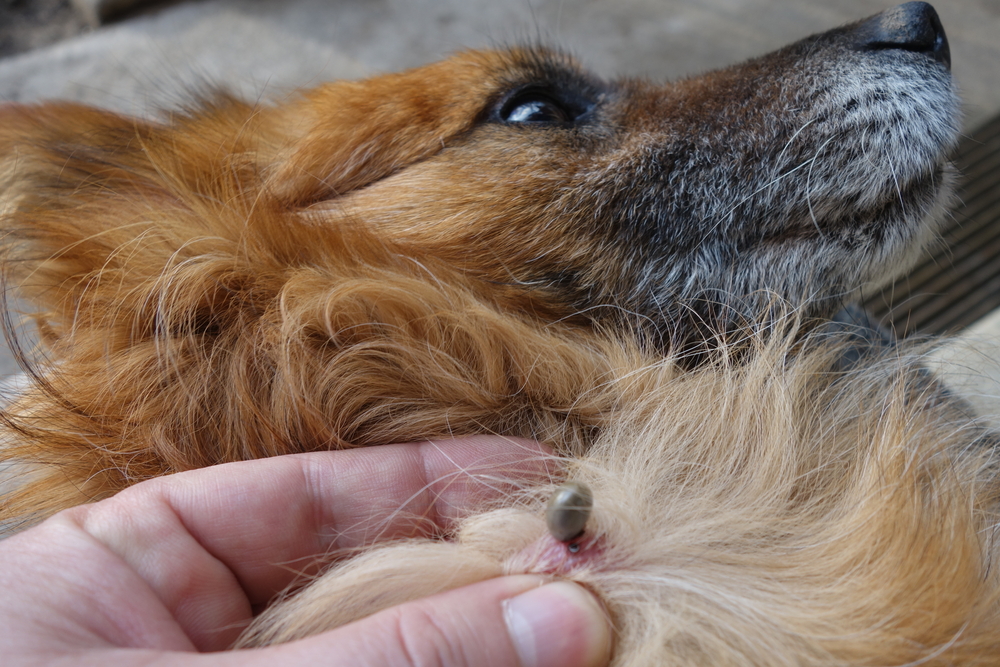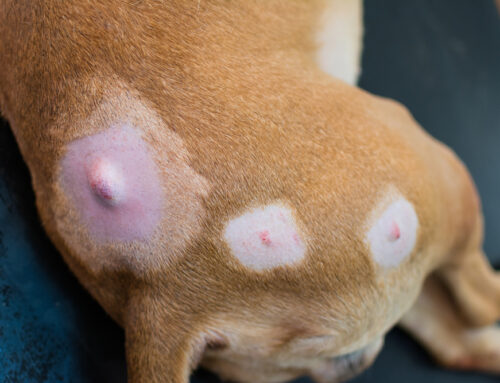Managing Flea Allergies in Pets for Lasting Relief
Constant scratching and irritated skin are signs that fleas are more than a nuisance- they are actually causing an allergic reaction. Treating both the pet and their environment is essential for long-term relief. With year-round prevention, pets can stay itch-free and comfortable.
At Star of Texas Veterinary Hospital in Austin, our team understands how challenging flea allergies can be for both pets and their families. We offer dermatology services designed to keep pets comfortable while achieving effective, lasting relief.
What Is Flea Allergy Dermatitis in Pets?
Flea allergy dermatitis (FAD) is one of the most common skin conditions in dogs and cats. Unlike normal flea irritation, FAD is an allergic reaction to flea saliva. A single bite can trigger days of intense itching.
The allergic response causes inflammation, leading to scratching, biting, and licking. Pets with FAD often develop secondary infections from damaged skin. You may never see a flea, dogs and cats groom themselves so thoroughly that they often remove evidence, leaving only the allergic reaction behind. Early detection helps prevent hot spots, hair loss, and chronic skin infections.
Recognizing Flea Allergy Symptoms in Pets
Dogs usually develop irritation along the lower back, tail base, and inner thighs. Cats often show small, crusty bumps across the back, neck, and face, known as miliary dermatitis.
Other typical symptoms include:
- Persistent scratching, especially near the tail and hindquarters
- Red, inflamed skin with scabs or crusts
- Hair loss in affected areas
- Hot spots or painful lesions
- Over-grooming in cats
- Restlessness or trouble sleeping due to discomfort
Even pets who have never reacted before can develop FAD over time as their immune system becomes sensitized. The symptoms of itching in pets can range from mild annoyance to severe distress requiring veterinary care.
When to See a Veterinarian for FAD
If your pet scratches persistently despite over-the-counter treatments, professional evaluation is needed. Conditions like food allergies, environmental triggers, or mange can mimic FAD.
Schedule an exam for your dog of cat if you notice:
- Open sores or bleeding
- Odor or discharge from the skin
- Behavioral changes from pain
- Symptoms that don’t improve within a few days
Our comprehensive veterinary services include thorough exams and testing to identify the root cause of discomfort, and our Fear Free, Cat-Friendly approach ensures even anxious pets feel safe during their visit.
Preventing Flea Allergies Before They Start in Your Pet
Year-Round Parasite Prevention for Dogs and Cats
The best way to manage flea allergies is to prevent flea bites. Modern preventives kill fleas before they bite, stopping the allergic reaction before it begins.
In Austin’s warm climate, fleas thrive year-round, so consistent prevention is vital. Medications with ingredients like spinosad, afoxolaner, or selamectin offer month-long protection and are safe for most pets. The benefits of year-round parasite prevention extend beyond fleas, protecting against ticks, heartworms, and intestinal parasites.
All household pets need treatment, even those that stay indoors. Fleas can hitchhike inside on clothing or other animals. Our team can recommend a prevention plan tailored to your pet’s health and lifestyle.
Grooming and Hygiene for Pets
Regular grooming helps detect fleas early and removes allergens from your pet’s coat. Use a fine-toothed flea comb around the neck, tail base, and belly to check for flea dirt (tiny black specks that turn red when wet).
Bathing with hypoallergenic or medicated shampoos soothes irritation and removes flea saliva residue. Avoid over-bathing, which can dry the skin. The importance of regular grooming goes beyond flea control, it supports overall skin and coat health.
Creating a Flea-Free Environment for Pets
Fleas spend most of their life cycle off your pet, living in carpets and bedding. Breaking that cycle is crucial. Understanding the flea lifecycle helps you stop reproduction and reinfestation.
Effective flea management strategies include:
- Vacuum carpets and furniture twice weekly
- Wash bedding in hot water weekly
- Treat outdoor areas where pets rest
- Use sprays or foggers that kill eggs and larvae
- Dispose of vacuum bags after each use
It often takes several months of consistent treatment to completely eradicate a flea population.
Treatment Options for Flea Allergy Dermatitis in Pets
Veterinary Treatment Plans
Managing FAD requires addressing symptoms, preventing future exposure, and supporting skin healing. Our veterinarians develop customized plans based on your pet’s condition.
Treatment usually includes controlling itching, treating infection, and restoring the skin barrier. For pets with multiple allergies, we may recommend further testing to identify all triggers.
Medications and Topical Care for an Itchy Pet
- Antihistamines ease mild itching and inflammation
- Corticosteroids provide rapid relief for severe reactions
- Immunomodulators like oclacitinib or lokivetmab target itch without steroid side effects
- Antibiotics or antifungals treat secondary infections
Topical sprays, mousses, and leave-on conditioners soothe irritation and repair the skin barrier. Some also help repel fleas.
Integrative and Supportive Therapies for Your Pet
Omega-3 fatty acids reduce inflammation and improve coat quality, while probiotics support immune balance. At Star of Texas Veterinary Hospital, we offer acupuncture and nutritional consultations as part of our integrative approach. These therapies complement traditional medicine for a more complete recovery.
The Importance of Ongoing Veterinary Partnership
Teamwork for Better Outcomes
Managing flea allergies is an ongoing process that benefits from consistent follow-up. Regular wellness exams help us track progress, adjust medications, and prevent new flare-ups.
Keeping a simple symptom log, tracking scratching, hair loss, or flare-ups, can reveal patterns that guide future treatment. Your pet’s needs may change with age or season. Some pets need more frequent preventives during warm months- regular check-ins help fine-tune their plan.
Common Misconceptions About Flea Allergies
Clearing Up Confusion
- Indoor pets can still get fleas. Fleas enter on clothing or other animals and quickly multiply indoors.
- You may never see a flea. Allergic pets often remove fleas while grooming, leaving only symptoms behind.
- One bite can cause major reactions. Flea saliva can trigger days or weeks of discomfort even after a single bite.
Understanding common pet allergy triggers helps you recognize that flea allergies are often just one part of a bigger picture.
FAQs
Can flea allergies be cured?
No, but they can be managed effectively with consistent prevention.
How long before improvement?
Mild cases improve in a few days; severe reactions may take weeks.
Are flea allergies contagious?
No, but fleas spread between pets, so treat all animals in the home.
Can humans react to fleas?
Yes, though human reactions are milder and limited to small itchy bumps.
Comfort and Relief From FAD Start Here
Flea allergy dermatitis causes real discomfort, but with consistent prevention and comprehensive treatment, your pet can live comfortably again. The key is year-round protection and a strong partnership with a veterinary team that truly understands your pet’s needs.
At Star of Texas Veterinary Hospital, our Fear Free certified professionals provide compassionate care that prioritizes comfort and results. Whether your pet needs immediate relief or long-term management, we’re here to help.
Contact us today to start your pet’s journey toward lasting comfort and healthier skin.







